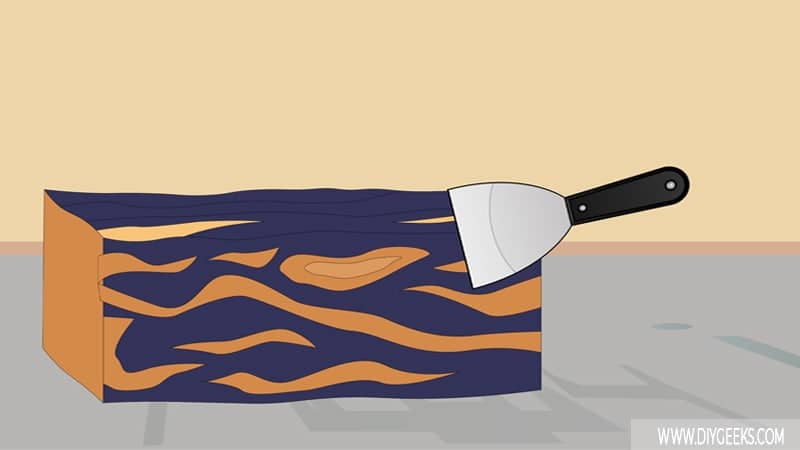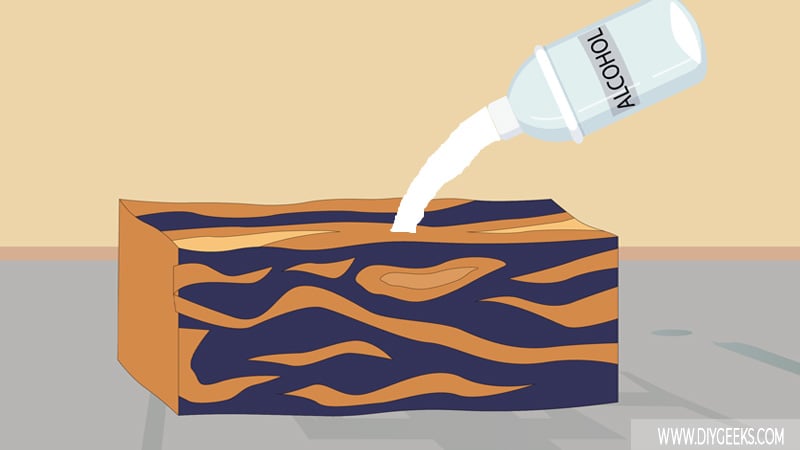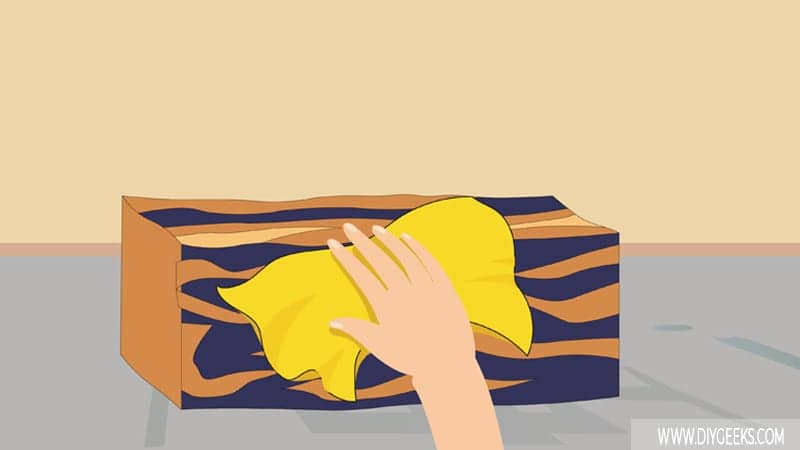You can remove paint from all surfaces if you use the right paint remover solvent. So, can you remove paint with rubbing alcohol?
You can remove water-based paint with rubbing alcohol. The rubbing alcohol will dissolve the paint binder and particles, making the paint lose its bond to the surface.
You can’t remove oil-based paint or sealer with rubbing alcohol as the oil-based finish is resistant to the isopropyl in the rubbing alcohol.
Does Rubbing Alcohol Remove Dried Paint?
Rubbing alcohol removes dried water-based paints but can’t remove dried oil-based paints or sealers.
The rubbing alcohol isopropyl will dissolve the polymer that binds the paint particles together and separate the paint from the surface. Once the polymer is dissolved and the paint loses its bond to the surface, you can scrape it off.
Don’t use rubbing alcohol to remove water-based paints from sensitive surfaces as it can discolor or damage them.
Rubbing alcohol can’t remove dried oil-based paint as their paint solvent (oil) is resistant to the isopropyl in the rubbing alcohol. The oil-based paint’s glossy finish also prevents rubbing alcohol from penetrating its coating.
Related Read: 5 Things That Can Dissolve Latex Paint?
How To Remove Paint With Rubbing Alcohol?
To remove paint with rubbing alcohol, do the following things.
- Clean the Paint Finish.
- Apply Rubbing Alcohol.
- Wipe the Paint Off.
The tools you need for this project are listed below.
- A Clean Rag.
- Rubbing Alcohol.
- Sanding Sponge or Paint Scraper.
- Spray Bottle (Optional).
- Safety Goggles.
Note: Rubbing alcohol doesn’t remove oil-based paints or sealers. If a water-based paint is sealed with a moisture-resistant coating, rubbing alcohol can’t remove it.
1. Clean the Paint Finish

Clean the paint finish to remove dirt, dust, or debris that can prevent rubbing alcohol from penetrating and removing the paint.
To clean the paint finish, use warm soapy water and a rag. Pour the warm soapy water over the paint finish and use a rag to wipe the dirt, dust, or debris off.
2. Apply Rubbing Alcohol

Pour rubbing alcohol directly over the paint finish or damp a rag with rubbing alcohol and use the rag to wipe the paint finish.
Wait 5-10 minutes until rubbing alcohol penetrates and dissolves the paint polymer and particles. Once the paint polymer and particle are dissolved, the paint finish loses its bonding to the surface and you can remove it.
Related Read: Will Goo Gone Remove Paint From Carpet?
3. Wipe The Paint Off

Wipe the paint off the surface with a rag or paint scraper. If the paint finish is liquefied, use a rag to wipe it off. If the paint finish is still hard after using rubbing alcohol, scrape it off.
After you remove the paint, clean the surface with warm soapy water to remove the rubbing alcohol residue. The surface will get discolored and damaged if you don’t remove the rubbing alcohol residue.
Can You Remove Paint From Different Surfaces With Rubbing Alcohol?
Wood
You can remove paint from wood with rubbing alcohol. Simply pour the rubbing alcohol over the paint finish, wait 10 minutes, and remove the paint.
However, wood has a porous surface and will get discolored or damaged if you use too much rubbing alcohol. Don’t leave the rubbing alcohol over a wooden surface for too long as the wood will absorb it and create permanent stains.
Clothes
You can remove paint from cotton, linen, and polyester clothes with rubbing alcohol, but can’t remove paint from wool or silk clothes.
It’s recommended to dilute rubbing alcohol before using it on clothes as it contains mild bleach that can fade, discolor, or stain certain fabrics.
Walls
You can remove paint from walls with rubbing alcohol. Rubbing alcohol will remove small paint stains or finish, but can’t remove large paint finishes.
To remove large wall paint finishes, use paint-stripping compound or coarse-grit sandpaper.
Metal
You can remove paint from metal with rubbing alcohol as the metal is non-porous. You can apply and leave the rubbing alcohol over the metal until the paint is removed.
Plastic
You can remove paint from plastic surfaces with rubbing alcohol as plastic is non-porous and won’t get damaged from rubbing alcohol.


